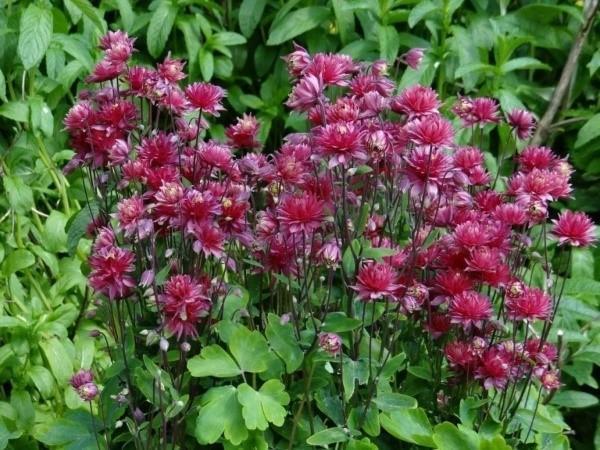Growing aquilegia in the garden: everything you need to know an amateur florist
 Many novice gardeners prefer to gain experience on unpretentious plants that do not differ in special requirements. For example, growing aquilegia is a great opportunity to get delicate spring flowers at minimal cost. The handsome catchment, as the perennial is also called, is only fragile at first. Growing up, it turns into a lush bush, resistant to drought and frost. Every spring or summer, it will delight you with charming bells with long spurs.
Many novice gardeners prefer to gain experience on unpretentious plants that do not differ in special requirements. For example, growing aquilegia is a great opportunity to get delicate spring flowers at minimal cost. The handsome catchment, as the perennial is also called, is only fragile at first. Growing up, it turns into a lush bush, resistant to drought and frost. Every spring or summer, it will delight you with charming bells with long spurs.
Where to plant aquilegia
The catchment is one of those versatile plants that will thrive anywhere. Flowers can grow both in a sunny area and in a shady corner. Each moment has its own pros and cons. If you want more inflorescences and larger buds, it is better to plant the aquilegia in the sun. However, in the absence of the opportunity to often water the beds, especially at first, it is worth planting flowers in partial shade.
Growing aquilegia: how to plant and how to care
The easiest way to breed a catchment area on a site is to purchase and sow seeds. They can be planted directly into open ground in late spring or before winter. Later, when the crops grow, they will need to be thinned out.
And if you sow seeds in March for seedlings, you will be able to bring the flowering of perennials a little closer. Seedlings are planted on the flowerbed in early summer. If previously introduced into the flower bed humus, more when planting bushes, you do not need to add any fertilizer. In order for the aquilegia to have room to grow, a distance of about 30 cm should be left between the holes. Planted seedlings should be watered abundantly.
Further care of aquilegia is simple:
- At first, young bushes need to be watered often. It is equally important to maintain humidity if the summers are dry. But closer to autumn, watering can be done less often. Mature plants have good drought tolerance.
- After watering, be sure to mulch the bushes. This will keep the ground moist longer in summer.
- 2-3 weeks after planting, you can make the first feeding. Any mineral complex is suitable, only the concentration should be 2 times weaker than indicated. In the future, it is enough to carry out one more such feeding.
- By autumn, when the aboveground part of the bushes withers, it can be cut off.
- In the spring, in the month of May, overwintered plants can be fed with small amounts of granular fertilizer. You can repeat the procedure at the end of summer.
For the first winter, it is better to cover a young aquilegia at least with spruce branches. In subsequent years, adult bushes will be able to hibernate without shelter.
Aquilegia will bloom for the second year. The first flowering may not be so plentiful, but every year there will be more and more buds. At the end of flowering, it is better to cut off the faded peduncles. They will take away food, and interfere with the preparation of plants for wintering. If you need to collect seeds, you can leave a couple. In general, growing aquilegia will not be a hassle. It can grow both in the sun and in the shade, and care for a beautiful perennial, as we can see, is minimal.